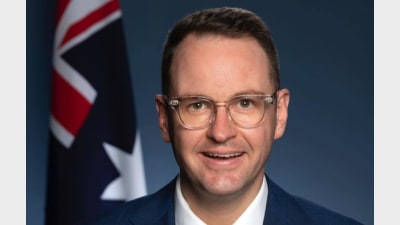Super funds lift the lid on investment strategies


While some superannuation funds have gone down the route of internalisation, others say they favour ‘smart partnering’ with external managers for diversification appeal.
Over the years, superannuation funds traditionally relied on external managers for investment management to achieve robust returns. However, the past decade has witnessed a shift as many funds have enhanced internal capabilities, offering the promise of lower fees to members.
AustralianSuper, Australia’s largest super fund, along with other mega funds like HESTA and UniSuper, collectively representing over $500 billion in investments, has significantly increased its direct investment holdings to approximately 75 per cent as of June 2023.
Hostplus, in contrast, has famously diverged from this trend by holding just 1 per cent of its $100 billion funds under management internally.
Speaking to Super Review, Hostplus chief investment officer Sam Sicilia observed that, while past performance is not an indicator of future performance, it has enjoyed “remarkable growth” and strong long-term performance with this strategy.
According to research house SuperRatings, Hostplus’ balanced option remains the top performer over a 10-year horizon at some 8.3 per cent per annum.
“Hostplus’ approach to external manager selection is centred on developing strong relationships and leveraging specialised expertise, in the form of some of the best global investment minds, to extract maximum value for our members,” Sicilia said.
“This value includes the ability to negotiate lower fees, access investment opportunities that we otherwise may not have, and tapping into on-the-ground specialists across a range of sectors and markets, from across the world.”
Hostplus allocates capital to external fund managers who then invest in specific sectors or companies, thus maintaining a broad and dynamic investment strategy. According to the fund, its relationships have been strengthened by the rapid shift away from external management by its peers.
“As our peers have moved from external to internal management, we have only become more important to them [external managers]. It’s about continuing to build those relationships and understanding how they can continue to deliver maximum value for our members as the fund grows,” he said.
In determining these external mandates, the fund emphasised that size is not a key factor.
“We don’t believe in a one-size-fits-all approach. We know that larger, more established managers can provide benefits of scale, but we also know that smaller managers can come with a different level of specialised expertise,” Sicilia said.
Cbus’ internalisation strategy values diversification
Cbus, an $85 billion fund that launched a new five-year investment strategy last year aiming to manage around 50 per cent of assets internally, emphasised the presence of “very high-calibre” external managers in the market, noting that their strategies often differ in style from the internal team’s approach.
Speaking to Super Review, Cbus chief investment officer Brett Chatfield said these external managers could contribute to building a diversified portfolio, ensuring the fund is not overly exposed to one style or factor.
“We will continue to build a diversity of different styles and approaches and historically we’ve had that by using external managers, which we still have, but we would like to have diversity in different styles and approaches within our internal team as well,” he said.
Presently, around 38 per cent of Cbus’ assets have been brought in-house. According to Chatfield, this has translated to total investment fee savings of $731 million achieved for its members through various activities, including internal strategies, renegotiating contracts with external managers, and refining asset allocation.
The fund is fairly agnostic regarding where the next 12 per cent of internalisation will be sourced from.
“This is exciting because it means that we can be opportunistic in searching for talent. If the right manager wants to make a break and come over, we can make that happen,” Chatfield said.
He clarified that there are no immediate plans for setting up overseas offices, unlike some of Cbus’ mega fund peers such as AustralianSuper and Aware Super. Instead, Cbus has chosen a strategy of “smart partnering” with global managers.
“We still have a strong track record of partnering with global investors like Copenhagen Infrastructure Partners, the Dutch Infrastructure Fund, and Brookfield on significant investments for members which help us harness opportunities overseas,” he said.
“We are in a sweet spot where we are big enough that few deals are too large, and few deals are too small.”
This offers the fund great flexibility, Chatfield added, and makes it an attractive investment partner in a number of sectors.
In partner selection, size is not key
When it comes to selecting external managers, Chatfield said size is not important.
Rather, the fund looks for firms with the strongest capability in a particular field, “who will deliver the best value for money for our members and who aligns with our own investment strategy”.
“We are willing to partner with both large and small firms if they meet the requirements that we are looking for,” he said.
“When determining the investment approach that will deliver the best possible returns for our members, we weigh up whether internal management or outsourcing investment management is the best approach. We will decide to manage investments internally when we are confident that we have the internal expertise to ensure value for our members.”
Similarly, Hostplus' Sicilia emphasised that the “one-size-fits-all approach” is redundant.
“We know that larger, more established managers can provide benefits of scale, but we also know that smaller managers can come with a different level of specialised expertise,” it said.
Last month, Australian Retirement Trust’s senior portfolio manager for public markets Peter Barany also emphasised there is “no right answer” to the debate surrounding the choice between partnering with boutique, smaller firms over larger, more established managers.
“What I can say is that depending on what stage the manager is in in their life cycle, there’s definitely different risks and considerations you need to look at. If you’ve got an early-stage manager, they’re usually full of entrepreneurial people, they’re hungry to outperform. This is their shop, so they’re all driven,” Barany said.
However, these early-stage managers aren’t always turning a profit. On the other hand, mandates with more established mega managers also came with their own deliberations, he said.
“You’ve got the mega managers, the more institutional, mainstream managers [where] business risk is lower, they’ve got a diverse product base, they’re managing more money, but [they can be] overly bureaucratic potentially,” he observed.
“Even worse, maybe they’re a bit fat and happy, and the people that leave are the ones that are actually good.”
According to its latest update, some of the investment managers utilitised by ART across its many strategies include firms of varying sizes, like Allegro Funds, Invesco, Lazard Asset Management, Firetrail Investments, First Sentier Investors, Maple-Brown Abbott, Wavestone Capital, and Baillie Gifford.
Barany explained one of the best ways ART seeks alignment with its investment manager is through the old adage of skin in the game.
“If a portfolio manager or the investment team has their own money at stake in their portfolio, then we think they’re much more likely to act in the interests of ART members whose members are in that portfolio as well,” he said.
Recommended for you
Australia’s second largest super fund has added thermal coal companies to its list of investment exclusions.
The fund has expanded its corporate superannuation solutions to partner with Australian businesses of all sizes.
The chief executive of Aware Super anticipates a significant shift in how ESG factors will influence portfolio values in the next six years, surpassing the changes witnessed in the past two decades.
In a recent statement, shadow assistant minister for home ownership and Liberal senator for NSW, Andrew Bragg, accused ‘big super’ of fabricating data attributed to the Reserve Bank of Australia to push their agenda.













Add new comment